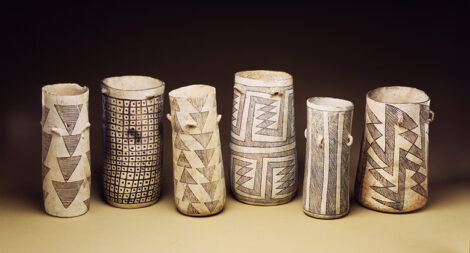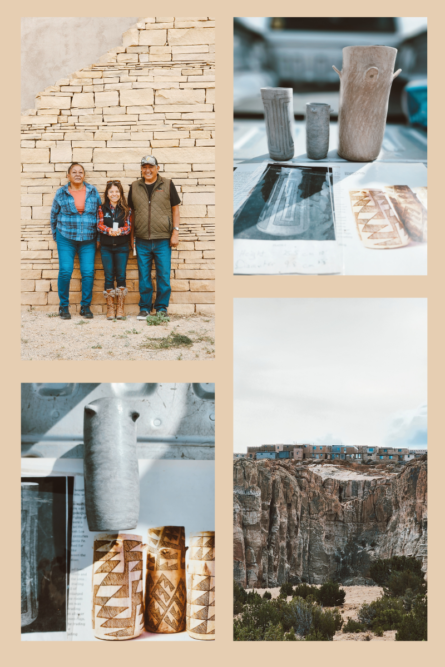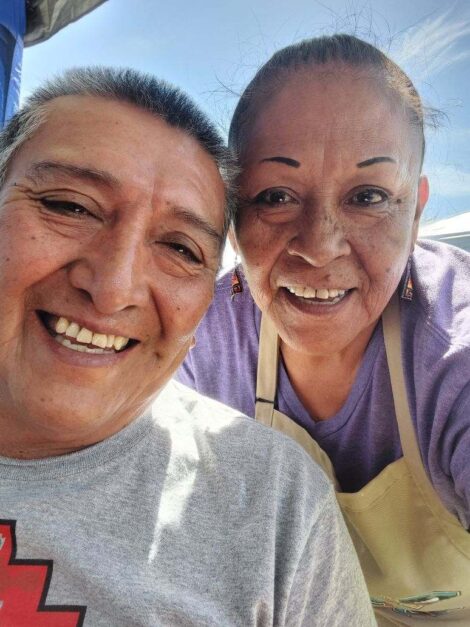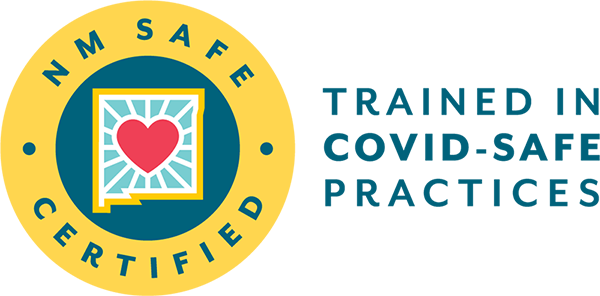Unveil the Ancestral + Modern Components of New Mexico

Dorie Reents-Budet, a curator at the Museum of Fine Arts in Boston and a Smithsonian Institution research associate specializing in Mayan cylinder vases, said that a sophisticated Mesoamerican trade network extended to Chaco in the north and as far south as Ecuador and Colombia.
The Mayan vessels, decorated with court scenes and hieroglyphics, were used to ceremonially consume chocolate at sumptuous feasts, Ms. Reents-Budet said. An expensive luxury, the cacao beans were fermented, roasted, and ground up, then mixed with water and flavorings before being whipped into froth. It made sense to present the beverage in a special vessel, she said.
Mystery of Ancient Pueblo Jars Is Solved By Michael Haederle February 3, 2009

Dreams often start with inspiration from others. I have had a vivid dream to offer a Welcome Cacao Elixir in an authentic Puebloan-made pottery vessel to our guests since I first curated our Chaco Canyon Glamping Excursions in 2017. To imagine our guest experience after an immersive and enchanted day spent with our interpretive guides exploring the Great Houses of Una Vida and Pueblo Bonito, what better way to arrive at our “roving Glamp Camp” than being greeted as perhaps the same way the ancient Chacoans were? But! The vessel was the most important part of this dream.
A dear friend and partner, Kris Lajeskie who owns the lovely Casa Tua in Santa Fe is a cultural designer contributing to much of Hotel Chaco’s inspiration. In the lobby of Hotel Chaco, behind the reception desk is a wall designed much like the core and veneer architectural design of the Great Houses in Chaco Canyon. Displayed on that back wall are replicas of the rare ceramic vessels found in the secret room 28 in Pueblo Bonito. Kris had creatively worked with her friends Lee and Flo Vallo from Acoma Pueblo to reconstruct these vessels as their ancestors had created them for cacao drinking and ceremony for a visual display on the wall. Our groups gather there on the first morning of our Chaco Canyon Glamping Excursions.
Last fall, my dream came true. Kris connected me with Flo and Lee and I visited them on a brisk morning in Acoma Pueblo. The scenic drive was like wandering into a postcard as Enchanted Mesa came into view. There in the distance was Sky City, known to be one of the oldest continuously inhabited towns or cities in North America.
Overly excited, I brought my Chaco Canyon interpretive book I had purchased from the Visitor Center with the photo of cacao cylinder ceramic vessels found in the dirt of room 28. Meanwhile, they brought out their pottery samples wrapped in a bread towel and displayed them on the rear of the tailgate of their truck. Right there in front of the Sky City Cultural Center parking lot, we discussed their process and journey to harvest the clay. We discussed the variety of designs Leland will craft with their yucca leaves on each vessel. He explained how much he loves designing them each uniquely and individually with their symmetrical patterns. The best news is, that they will have them ready in time for our first Glamping departure to Chaco Canyon in April!
I couldn’t be more honored or delighted than sharing this dream with each of our glamping guests to experience the heritage of cacao that took the long journey from the Mesoamerican world. Here is a little more about Lee and Flo and their pottery creation process:

Meet the Artists | Lee + Flo Vallo
Our names are Leland (Lee) and Florinda (Flo) Vallo. We are married and have three daughters and five grandchildren. We are both from the Pueblo of Acoma. We have been making and painting handmade pottery for over 40 years. We have enjoyed our family life and career. We also enjoy hiking for elk and deer sheds, picking old pottery shards, and looking for hematite stones in arroyos. While on our hikes if we come across a yucca plant, we collect several yucca leaves for making painting brushes. Flo and I were taught how to gather and provide all the materials for making pottery by our mothers and grandmothers. We are both fourth-generation potters and painters. All our material is provided by Mother Earth and with prayers.
With the items we gather this is how our pottery comes to be:
1st Step: Preparing the Clay – Our clay mine provides shale clay for our use, which we grind down to powder and mix with old pottery shards. This creates a temper seal and makes the pottery naturally watertight.
2nd Step: Making Pottery – Flo uses a coil method for making large ollas and seed pots. Flo’s tools consist of Red Wood pedals and gourds. Flo also makes corrugated pottery by using a rope coil method and pinching the coil with her fingertips, while her fingernails make the design.
3rd Step: Getting the Pottery Ready to Paint – At this point, the pottery is completely dry. We call this step “white slipping”, in which we soak the white sandstone paint and brush it on the pottery. Before the white slip dries, we polish the damp surface with a polishing stone, which creates a poly-chrome surface so smooth the yucca brush glides easily over the surface.
4th Step: Making Black Paint – The black paint is made from hematite mixed with wild spinach juice and mixed together on a painting stone. The paint is applied to the pottery using a yucca leaf. The yucca leaf is chewed on to get the unneeded fibers off and to get the correct thickness for fine-line painting and detailed painting. The orange paint we use comes from orange sandstone, which we soak and strain. We use a buffing cloth after the paint is applied and before the paint dries, we use the cloth to shine up the orange paint.
We thank our Creator, mothers, and grandmothers for their love and for encouraging us to explore and expand our craftsmanship in pottery making.
Artists,
Flo and Lee Vallo


